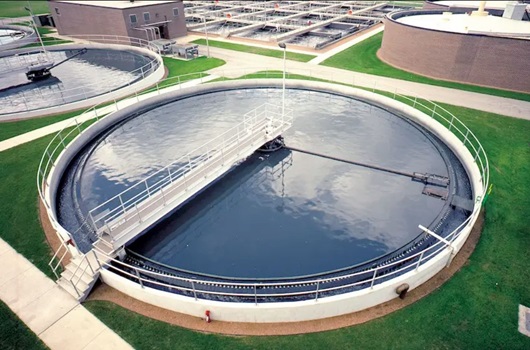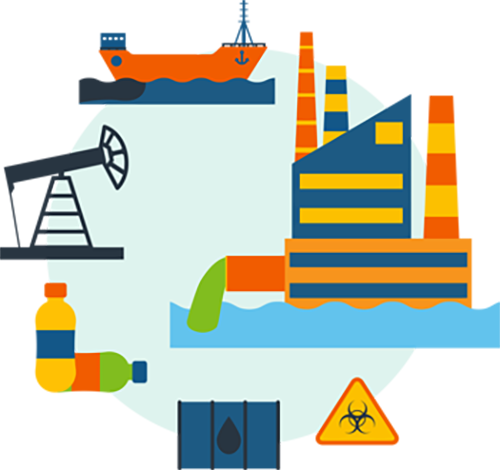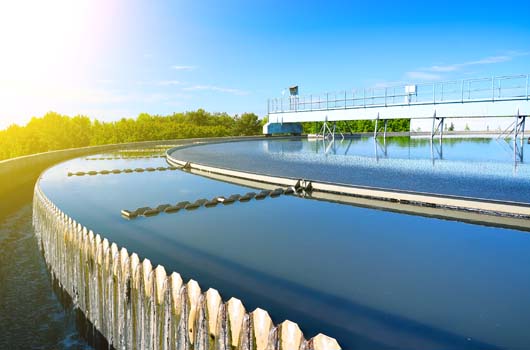Water Resource Management
Our offer covers a large portfolio of solutions that empowers water resources improvement and assurance, congruity with guidelines and adds to a circular economy.
Our expertise:
Water Purification Systems
Most of the time, the water for most laboratory and clinical applications is purified from tap water. It is significant that impurities are removed, and additional contamination is managed effectively.
At the point, the innovations utilized in ZERO and ONE can eliminate pollutant from water down to amazingly low levels; a few advances center around explicit toxins while others sway on a broader spectrum of targets. To accomplish the right water purity for a specific application, in a cost-effective manner, technologies must be arranged in combination and their operation optimized.
On this page, you can find out about the technologies that are used in combination to remove the various impurities found in potable water supplies.
ACTIVATED CARBON:
Activated carbon contains a maze of little pores with sizes ranging from 500-1000 nm and a surface area of around 1000 square meters for every gram. The idea of this surface permits adsorption of organic contaminants from the water and catalytic deterioration of free chlorine and, more slowly, chloramines.
It is applied in:
- Pre-treatment cartridges
- Composite Vent channels
- Final Purification cartridges
How does it work
The vast surface region of the activated carbon implies that organic mixes adsorb to the surface through ionic, polar and Van der Waals powers. Activated carbon is commonly utilized in mix with different innovations inside the water purification process and the utilization of this should be kept into thought for item plan. One of the principle advantages of activated carbons in the pre-treatment measure is to eliminate any chlorine or chloramine.


ELECTRODEIONIZATION
Electrode ionization (EDI) is an electrically determined water treatment innovation that utilizes power, ion exchange and resin to remove ionized species from water. The blend of ion-exchange resins and ion-exchange membranes, which are utilized to move ionic impurities into a waste or concentrate water stream leaving cleaned purified product water.
As pollutions leave by means of the concentrate water framework, their build-up does not exhaust the resin and therefore prolongs resin lifespan. A solitary EDI unit may work for a many years before a substitution is required. Commonly product water resistivity of >15 MΩ.cm is reliably accomplished utilizing this process. This innovation can be utilized as a choice to single use purging cartridges.
Its turn of events and use in water cleaning defeated a portion of the limitations of ion exchange resin beds, particularly the release of ions as the beds exhaust.
Water enters the EDI module, where an applied current forces ion to move through the resins and across the membranes. These particles are gathered into concentrate streams which can then be put to drain or be recycled. The deionized product water would then be able to be utilized straightforwardly or go through additional treatment for enhanced water purity.
At the point when the ions are traveled through the resins and between the cation or anion membranes, they are traded for H+ and OH-particles. Ions that become bound to the ion exchange resins migrate to a separate chamber under the influence of an externally applied electric field. This additionally creates the H+ and OH-ions necessary to maintain the resins in their regenerated state. Ions in the separate chamber are flushed to waste.
The ion exchange beds in our EDI frameworks are recovered persistently so they don’t deplete similarly as ion exchange beds that are worked in batch mode.
SUBMICRO FILTRATION
Filtration basically works similarly as a sieve and provides a physical barrier dependent on pore size to the section of particles in purified water systems. It utilizes membrane filters with pore size of normally 1 to 10 nm which can eliminate particles as little as protein macromolecules. Ultrafiltration is a brilliant innovation for guaranteeing steady ultrapure water quality as for particles, microscopic organisms, and pyrogens.
Sub-micron filtration, including micro, ultra-micro, and ultra-filters (1-200 nm) are utilized as a component of a ‘cleaning’ circle, or at the purpose of-utilization. Fine filtration is applied to eliminate microorganisms (live or dead) and biologically active molecules. These total channels have pores more modest than their planned objective and can hold the contamination while permitting water to go through. Contaminants that are eliminated by sub-micron filtration, incorporate microbes, colloids, enzymes, endotoxins, and particulates.
How does it work:
The water flow is coordinated in one of two different ways: either
(1) coordinated straight through the membrane, or
(2) in a “cross-flow” style, where a bit of the input water flows across the membrane surface to lessen fouling by rinsing away contaminants.
Ultrafilters are generally introduced close to the source of a water sanitization framework to diminish the concentration of microorganisms and huge natural atoms. These filters should be frequently maintained to ensure they remain effective.
ULTRAVIOLET
Ultraviolet (UV) light is utilized as a technique to inactivate microorganisms by interfering with nucleic acids and disturbing their DNA, adequately hindering replication. Ultraviolet light that is utilized in-line in laboratory water purification systems are low pressure mercury lamps.
How it works:
UV radiation disturbs DNA and RNA polymerase at low portions while separating large organic molecules into more modest ionized components. These components are then eliminated downstream by high purity ion exchange resin beds. Earlier removal of organic ions optimizes the viability of this innovation in water purification. Ultraviolet is additionally utilized in photolysis to eliminate chlorine and chloramine species from the water.
Treatment of water with UV-C light is utilized to photo-oxidise organic impurities and/or inactivate microorganisms. Photo-oxidation of organic impurities results in polar or charged species that can be subsequently be removed by ion-exchange processes. Typically the UV lamp forms part of a ‘polishing’ treatment loop including ion-exchange, through which water is repeatedly circulated to maintain quality. This can be accomplished in ZERO and ONE items that utilizes the methodology of Aquaporin membranes as one of its prime components.
REVERSE OSMOSIS
Reverse osmosis is a cost-effective way to remove impurities from your water using a semi-permeable membrane.
Reverse osmosis (RO) is a process whereby water is gone through a membrane under pressure in crossflow fashion. With its excellent purifying efficiency, reverse osmosis is one of the most prudent strategies for the evacuation of up to 99% of impurities.
How it works:
During reverse osmosis, feedwater is pumped past the input side of a RO layer under pressure (ordinarily 4-15 bar, 60-220 psi) in crossflow fashion. Ordinarily 15-30% of feedwater goes through the membrane as penetrate and the ways out the membrane as the concentrate that contains most of the salts, organics and essentially all particulates.
RO membranes are typically thin film polyamide and are stable over a wide pH range, notwithstanding, they can be harmed by oxidizing agents, for example, chlorine, so pretreatment is typically needed to protect the membrane. RO membranes are utilized to eliminate water contaminants and reject water contaminants that are under 1 nm in breadth. Ordinarily over 90% of ionic pollutant, most organic pollutant, and virtually all particulates, microorganisms and biomolecules are eliminated from the filtrate or permeate water; these are carried out of the RO module in a waste or concentrate water stream.
Water Treatment Management
Water Supply Management
The water used to supply modern processes and utilities speaks to the largest water-related consumption at an industrial site. Differentiating water resources while securing reliable water supplies contributes to reducing the water footprint of industrial activities.

SECURE CATCHMENTS
Ensure the water supply is reliable in terms of quality and quantity
Groundwater sources can be tapped by different techniques, for example, shafts, boreholes, drainage tunnels, etc. These catchments empower numerous industrial sites to reduce their dependency on external water supplies.
We convey consulting services and curative operations to build or maintain water catchments:
- Technical and regulatory design for borehole drilling: We carry out feasibility studies (assessment of accessible volume of resource, specialized details for borehole) and deal with the drilling project declarations.
- Smart catchment management: Instrumentation and observing, Indicator estimation, Data investigation, Additional diagnostic.
- Regeneration of boreholes: Mechanical, synthetic, or biological blockages are potential reasons for borehole malfunction. We convey solutions utilizing mechanical or chemical treatments.
- Prevention of drainage areas: Catchments can be presented to occasional or widespread contamination. We convey choice guide devices used to analyze and demonstrate the contamination sources and aid with sending an expert quality plan to screen the quality of the water table.
WATER TREATMENT:
Adapt treatments to water usage:
Controlling the quality of water in processes is a is a source of value generation for industries. Intended for product manufacture or equipment operation, water requires different quality levels depending on its utilizations.
We help industrial operators in differentiating and enhancing their water resources, whether for treatment, supply, or reuse.
Optimize resource management:
From counseling to services, we meet your necessities to improve and enhance water resources inside your plant, to:
- Control the water quality on new sources of supply, specifically suspended solids, turbidity, polluting agents, nitrates, metals, minerals, colloid index.
- Treat wastewater for additional utilization, considering suspended particulate standards, natural contamination, salt content and toxicity.
Comply with health regulations and restrictions:
The technical combinations we design and construct empower you to determine and control exact quality models for the water you incorporate into your items:
- Suspended particulates
- Metals
- Micro-organisms
- Organic polluting agents

Ensure resource accessibility and u reliability of production:
The innovation and services we give ensure the quality and amount of water required, whatever the source of supply to produce heat.
- Suspended solids, salt content and scale development in make-up water.
- Corrosion in water supply organizations.
- Corrosion and pollution in condensate recovery.
- Variation of concentration and heat losses in drainage water.
Sewage and Effluent Treatment Plants
Domestic and Industrial sites create wastewater which critically requires appropriate treatment. This is to ensure that their activities cause no damage to the natural environment. The nature of industrial effluents is their diversity. Treatment processes must therefore be adapted to each industry.
RESOURCE proposes nearby and off-site solutions that can deal with a wide variety of contaminating specialists by adjusting to the design of each site.
Treatment of enormous variety of effluents to secure resources.
We prescribe treatment processes that are fit to the nature of the effluents, we decide revenues of optimization and deliver facility operation and maintenance based on best practices.
SEWAGE TREATMENT PLANTS
Sewage treatment is the process of removing contaminants from sewage water (runoff effluents and domestic effluents). It incorporates physical, chemical, and biological processes to eliminate physical, chemical, and organic pollutants. Its goal is to produce environmentally safe treated water and a treated solid waste suitable for disposal or reuse as manure.
Sewage treatment generally involves three stages,
- Primary Treatment
- Secondary Treatment
- Tertiary Treatment
Sewage treatment is designed using the following methods
- Extended aeration with Activated sludge process
- Sequential Batch Reactors (SBR)
- Membrane Bioreactor (MBR) Technology
- Fluidized Bed Bio-Reactor Process (FBBR)
- Moving Bed Bio Reactors (MBBR)

EFFLUENT TREATMENT PLANT
Industrial wastewater contains a diversity of impurities and therefore for this reason alone, its treatment constitutes a special task. Furthermore, the emission limits for industrial effluent are constantly being tightened up. Closed circuits and product recovery in various production processes are becoming an increasing priority among manufacturing companies. These measures represent an additional contribution to the protection of aquatic eco-systems and possess great cost-cutting potential. The treatment process contains mechanical, biological, and physio-chemical process steps.
In the case of biological, anaerobic wastewater treatment we employ conventional processes and space-saving, high-performance reactors such as the world’s most frequently used UASB process. Other systems are also utilized in accordance with the characteristics of the wastewater, e.g. the activated sludge process or physical treatment using Lamella clarifiers for our system for less polluted water/high concentrated effluent. In the case of maximum cleaning requirements (e.g. water reuse) we employ membrane processes with submerged or external membranes. The advantages are considerable savings of liquid resources and practically zero discharge of wastewater.
Following processes are used:
- Aerobic biological processes
- Anaerobic biological processes
- Physio – Chemical processes
ZERO LIQUID DISCHARGE SYSTEM
Zero Liquid systems eliminate liquid waste streams from your plant and produce high purity water for reuse. Certain factors make water a valuable resource and therefore it is considered a key manufacturing resource. Hence installing a ZLD system would maximize water recycles.
The ZLD system provides an economical solution to all industries which must compete with local water availability, water costs and wastewater discharge criteria.
The ZLD system combines several wastewater treatment technologies, including sanitary collection, biological water treatment, Ultra Filtration, Micro filtration, RO water recycling and evaporation ponds/Mechanical Evaporators. These systems recycle waste streams such as:
- Boilers blow down
- Cooling Tower blow down
- RO reject
- DM regeneration waste
- Softener regeneration waste
- Filter backwash
- Plant drains
Zero Liquid Discharge System is a fully integrated automated system incorporating a mechanical evaporator and solids de-watering. We can recover 95 to 99 percent of wastewater as high-purity distillate (< 10 mg/1 TDS). High purity distillate produced in this system can be used for cooling tower or boiler makeup water.
Notably, the ZLD reduces water supply costs given that Industries no longer must purchase as much fresh water for manufacturing.
RESOURCE provide, design reliable, cost-effective systems that give you maximum benefits like,
- Energy efficiency
- Ease of operation
- Maxima recycle